Timesifter: 2012

Baleful Strix | Illustrated by Nils Hamm
Welcome back to Timesifter, where we wonder why we're still here.
Somehow we were able to sidestep annihilation in 2012, as was predicted by those fatalist Mayans and their circular calendars. It was a little touch-and-go there if you'll remember, and enough people were swept up into the idea that our collective demise was predicted a millennia ago that NASA had to stop whatever it was they were doing (covering up the fact the Earth is flat, assumedly) to assuage the public's fear.
Our extinction was supposed to come on Dec. 21 following a collision between Earth and the mysterious "Planet X," Niburu. The entire saga was chronicled for posterity in the documentary 2012, narrated by John Cusack (ignore the fact that movie was released in 2009 for comedic purposes).
The year 2012 was only ten years ago. The "doing math" side of your brain thinks that statement is so obvious it shouldn't require mentioning, but the "I lived through every one of those ten years" side of your brain is completely incapable of accepting that it's only been 3,500 days or so since Gangnam Style.
Other things happened in 2012, of course. The biggest show on television was The Walking Dead, and a guy jumped off of space, and since everything old is new again and life is an endless cycle of repetition with little variance, 2012 also featured another boy band craze, this time led by One Direction. Of course, I was spending most of that year listening to new releases from Alcest and Panopticon, because I too am a cliche.
But what happened in the Magic world? Let's find out.

Vampires, Dragons, and Bureaucracy
With 2012, we Magic players were still in the halcyon glow of "top-down design" as a set creation philosophy. Entering into our collective zeitgeist with the previous year's Innistrad, top-down design has been with us ever since, more or less, as a way for designers to craft a card, set, or block around a "flavorful" concept; essentially, starting with the question of "wouldn't it be cool if?" and going from there. Top-down design has been championed in some designer circles for many years before 2012, of course, but with Innistrad it became what many credit as that set's secret to success.
With its release in late 2011 and as was tradition of the time, Innistrad saw two supplementary sets coming in 2012: Dark Ascension and Avacyn Restored. Both were maligned at the time for being underpowered and a disappointing follow-up to the immediately and immensely popular Innistrad, but did they age like wine in the intervening decade? Or did they age like current-day references to Honey Boo Boo?
The diminishing returns of the Innistrad block weren't the only thing going on in 2012. We were also the recipients of a second go-round of Planechase, still the best supplementary product in Magic's history, and a new core set in Magic 2013 that saw the revival and modernization of an old foe. Speaking of supplementary sets, 2012 also gave us From the Vault: Realms, Duel Decks: Izzet vs. Golgari, and Commander's Arsenal.
The year finishes with a set that many still point to as their favorite of all-time, and one that has made an indelible impact on the game from not only a lore standpoint, but on constructed play as well in Return to Ravnica.
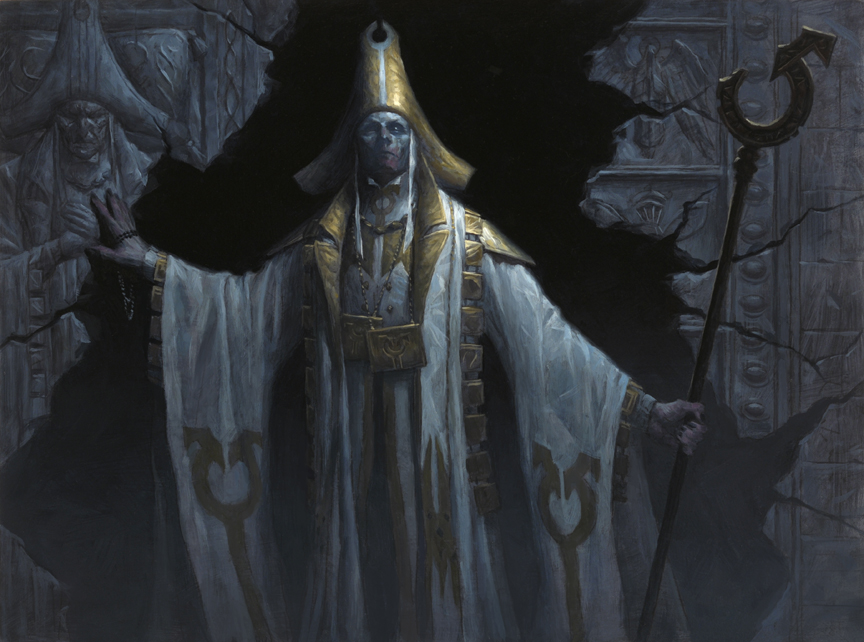
Dark Ascension
The horror-themed Innistrad set was a hit with players, as evidenced by the fact that Mark Rosewater himself ranked the set first overall among those he's worked on. We'll get into the nuts and bolts of that if/when we ever get to Timesifter: 2011, but for now all we need to know is that Dark Ascension had some pretty big shoes to fill.
A lot of what was going on in Innistrad is still going on here, namely double-faced cards, tribal themes, and the overall spoooooky flavor thanks to that top-down design. Dark Ascension released in early February of 2012, notably one of the least frightening times of the year unless you're a groundhog, but new to the greater Magic canon thanks to the set is the Undying mechanic, a significantly powerful recursion keyword still seeing plenty of abuse today.
The other new keyword introduced by the set, Fateful Hour, had very limited impact both then and now. Storywise, the set continued the saga of Innistrad: where'd that big Angel Avacyn get off to? Who's that mean necromancer lady yelling about Griselbrand? Why can't Thalia ever catch a break? All those questions and more will... not be answered here.
Despite it being a small set only containing a hair more than 150 cards, and being relatively disappointing in terms of overall card quality, Dark Ascension provided us a number of cards that are still relevant today. Many, many decks out there still consider Faithless Looting
Singles for the set won't break your bank, either. Only Mikaeus, the Unhallowed

Avacyn Restored
It's time to crack open that Helvault
The 58th block in Magic'shistory is Avacyn Restored, released in May of 2012, the set symbol being Avacyn's collar, the symbol of her church. Bucking the trend established by many blocks before it, the finale of the Innistrad block was not a small set, but the opposite of that, clocking in at 244 cards. Everything about Avacyn Restored is about the restoration of Avacyn, as you may or may not have guessed. As the Angel returns, so too did humanity's hope to eke out more than a meager existence before being eaten by a Zombie, Vampire, or Beast. To reflect that hope, the set cares much less about the graveyard than its predecessors, instead focusing on new mechanic, Miracle, and its fancy new border treatment.
The set also introduced Soulbond as a mechanic, symbolizing teamwork making the dream of a monster-free Innistrad work.
One unique aspect of Avacyn Restored was its gimmicky prerelease, during which some local game stores offered a chance at a "Helvault" prerelease kit. Players "unlocked seals" on a giant cardboard Helvault in the store, ultimately opening the thing up and splitting the contents within. Reactions of the time ranged from "eh, kinda cool I guess" to "this was a complete and utter debacle", a pattern that continues to this day.
The biggest complaint was that the contents weren't random, and after a massive build-up of hype, some stores had stinkers while others had Helvaults packed to the brim with pricy promos and foils. Considering the fact that it's been 10 years and nothing similar has been attempted, it's probably safe to say the overall experience wasn't ideal.
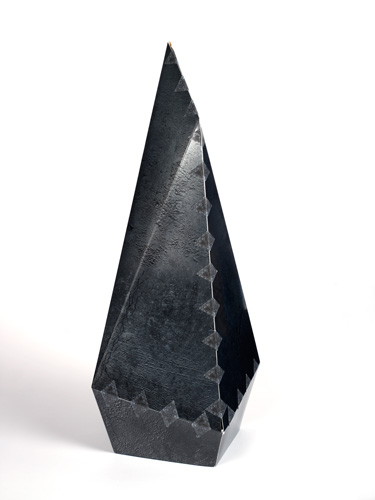
That experience, and the further sullying of what people consider to be the greatest draft environment ever in triple-Innistrad, colored the set negatively at the time. But it's been 10 years, and a significant proportion of the Commander playerbase wasn't even around at the time. Today, Avacyn Restored cards see plenty of play. It's likely Craterhoof Behemoth
One half of the mono-black "you go down I go up" combo, Exquisite Blood
The impact of the set on Commander is reflected by individual prices, with some of the aforementioned cards running upwards of $20-60, as well as Avacyn, Angel of Hope
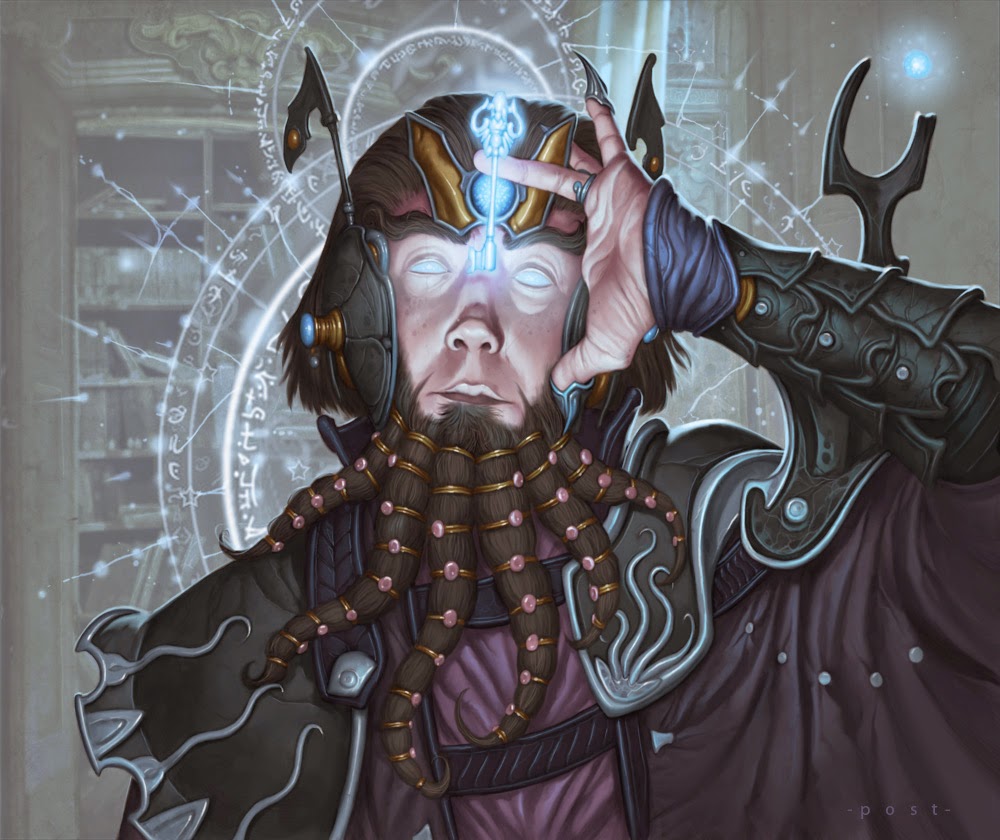
Planechase 2012
The aptly named Planeschase 2012 hit shelves just a month after Avacyn Restored, so if you're wondering why it seems here in 2022 we're inundated with constant releases, good news: it's not a new problem.
A sequel to 2009's Planechase, the supplemental set featured new planar cards as well as four decks that each contained a number of never-before-seen cards. Today's players might be surprised to learn that some well-known cards never existed before popping up here in Planechase 2012, like Baleful Strix
Some players still swear by Planechase as the best supplemental release in Magic's history, and it certainly provides a bit of chaotic uncertainty if your usual Commander night has gotten a bit stale. Feel free to argue among yourselves.
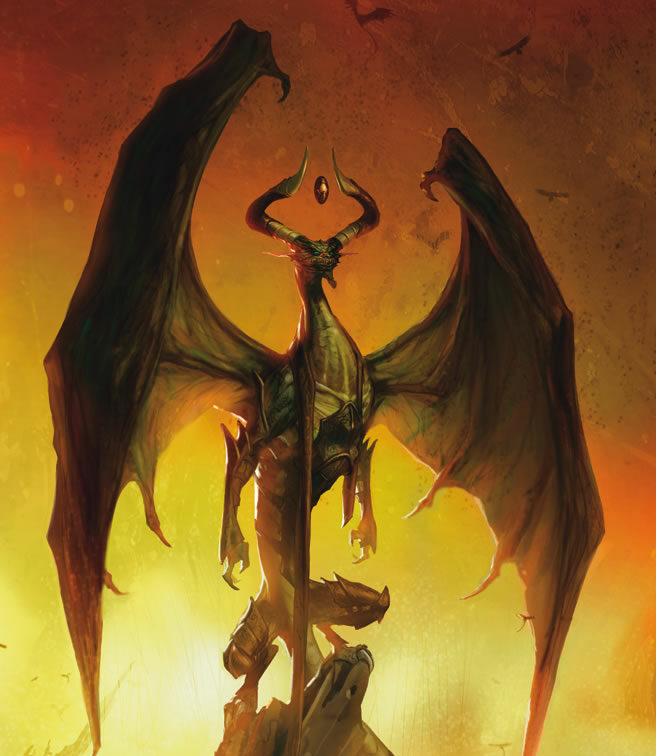
Magic 2013
Following the convention set forth by Madden and automobile manufacturers, the Core Set released in July 2012 was in fact named Magic 2013.
The large, standalone set featured 249 cards and was a "reboot" of sorts for Core Sets in general, focusing less on providing newer players with an accessible entry point and more on using Core Sets as a story vehicle. It also sought to forge its own identity separate from previous Core Sets by rejecting tradition and embracing modernity: for the first time in a Core Set there was no Giant Spider
It's likely the set is remembered less for its impact on today's Commander than for what it did to Standard at the time, which is make everyone live in fear of Thragtusk
Being a Core Set, there were still plenty of reprints, and many of the most popular Commander staples from the set are just that, with Reliquary Tower
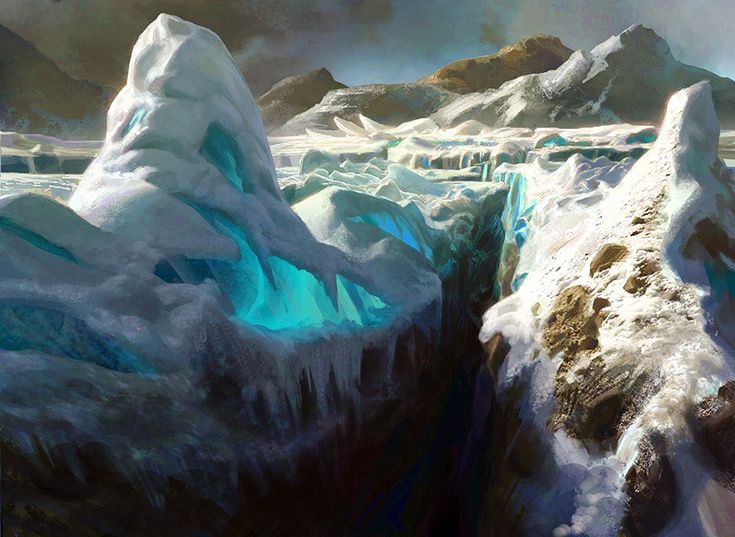
From the Vault: Realms and Duel Decks: Izzet vs. Golgari
Dropping in late August and early September, respectively (only a week apart, in fact), From the Vault: Realms and Duel Decks: Izzet vs. Golgari were two preconstructed releases that no one cared about and I don't know why I'm making the effort to type all these words. I'm just that dedicated to you all.
From the Vault: Realms is notable for featuring a Dryad Arbor
As for the Duel Decks, $20 in 2012 money bought you two themed decks to foreshadow the upcoming release of Return to Ravnica. The coolest thing about them was the unique art for Jarad, Golgari Lich Lord
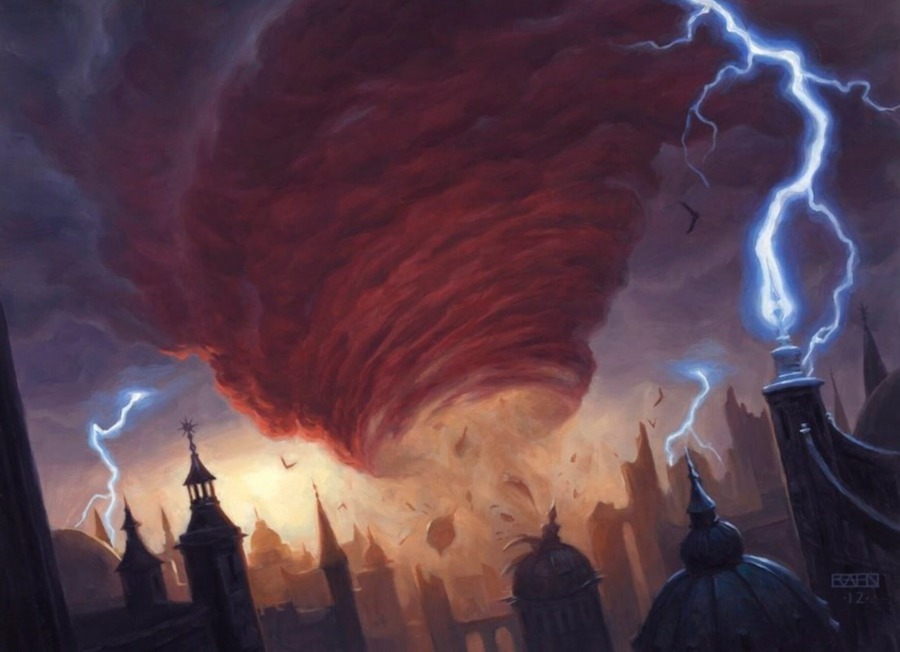
Return to Ravnica
While the rest of the world was debating whether they were Team Peeta or Team Gale, Magic players were making a different kind of superfluous marketing choice: which guild are you?
Of course, if you click that link expecting to be redirected to a Ravnica guilds quiz, you'll be disappointed, as the "official" quiz that was introduced along with Return to Ravnica was hosted on PlaneswalkerPoints.com, which you may remember as "this was a complete and utter debacle." But at the time, choosing guild allegiance was all the rage, and as players gathered at their game stores for the Return to Ravnica prerelease in late September of 2012, it was not uncommon to hear spirited debate on which guild was best (at least until the Rakdos fans got too carried away). The set was a big deal. Coming off the roller coaster that was the second two-thirds of the immensely popular Innistrad block, players were champing at the bit to see what's new in Ravnica.
Return to Ravnica was the kick-off of a new block that provided us with 274 cards. It was thematically a continuation of everything that made the original Ravnica block great, with a heavy multicolored card theme, iconic art direction, and of course, guilds. For the first set of the block, we saw the inclusion of five of the ten guilds in Azorius, Golgari, Izzet, Rakdos, and Selesnya. That guild theme continued for players into the prerelease, as once signed up you were asked to choose which guild's prerelease kit to receive. You also got a sticker; my Selesnya sticker, in case you were wondering (you weren't) stuck loyally to my old desktop computer case for about seven years.
Like its Ravnican predecessor, Return to Ravnica introduced new keywords for each guild, namely Detain, Unleash, Populate, Overload, and Scavenge. Some were a bit more well-loved than others.
Befitting its status as a set considered one of the best in terms of raw popularity, Return to Ravnica cards are still among the most discussed in Commander even today. Sure, most of that discussion revolves around Cyclonic Rift: everyone hates it, blue players love it, should it be banned, should it just be a Commander itself, etc., but there's more to the set than that. Want to get your one giant scary creature in for guaranteed damage? Try Rogue's Passage. Playing five colors and refuse to admit you're being color-greedy? How about Chromatic Lantern?
Want to blow up a bunch of artifacts and are sick of your older friends who never shut up about Shattering Spree? Then Vandalblast is the card for you. There's also Rakdos Charm, Guttersnipe, Abrupt Decay, Sphere of Safety, Utvara Hellkite, Rootborn Defenses... virtually every popular Commander archetype today has at least one card from Return to Ravnica it considers a must-use.
The ubiquity of some of those cards has also led to their price, even a decade later, with Cyclonic Rift leading the pack. Not mentioned yet is Worldspine Wurm, which hovers around $10 through the sheer power of big green monster energy.
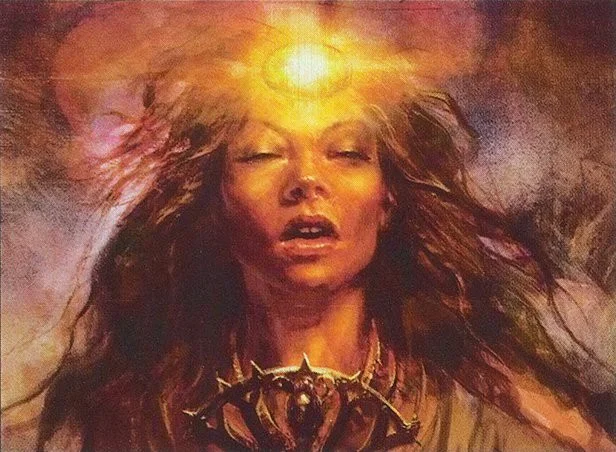
Commander's Arsenal
We'll just touch on this briefly since I'm sick of writing about 2012.
Commander's Arsenal debuted in November and contained a number of popular Commander cards in a product that was somewhat rushed together. It was thought of at the time to be a sought-after product that came with an unnaturally inflated price tag thanks to its limited print run, and there was plenty of FOMO going around among those unable to secure a copy, which was justified to be desired by Commander players: in it was several coveted cards, all in foil, from Chaos Warp to Command Tower (the former's Commander's Arsenal version being the only available foil until Strixhaven Mystical Archive a year ago), Loyal Retainers to Rhystic Study and Sylvan Library.
In addition to playable cards, Commander's Arsenal also contained 10 oversized "commander" cards featuring legendary creatures from Magic history. Most notably, two of those oversized cards, Sliver Queen and Karn, Silver Golem, were and still are on the Reserved List, and they were only able to be reprinted due to the fact the oversized nature of said reprints meant they weren't legal to be played in any format. Why does that sound familiar?


The MSRP of Commander's Arsenal at the time of its release was $75, and it was routinely marked up to nearly four times that amount. Even then, that inflated price would still look like a steal today, since if you were to buy each card individually (with the oversized cards as well as the fancy included life counter), the full set would run you about $650.

A Grave Betrayal
If one were to construct a Commander deck using only cards released in 2012, one would find that a much easier task than those playing along with previous Timesifter entries. Where once we had a dearth of legends, or a lack of playable cards, in 2012 we have more options than I honestly know what to do with.
In total, there are 21 legendary creatures that were released in 2012 (20 if you don't count the banned-in-Commander Griselbrand), which might not seem like a lot by today's standards, but we're coming from a world where our best options were Mirri, Cat Warrior. Let's take a look:
2012's Mayan Apocalypse Party Crew
View on ArchidektLegends (20)
- 1 Avacyn, Angel of Hope
- 1 Bruna, Light of Alabaster
- 1 Gisela, Blade of Goldnight
- 1 Isperia, Supreme Judge
- 1 Jarad, Golgari Lich Lord
- 1 Krenko, Mob Boss
- 1 Krond the Dawn Clad
- 1 Maelstrom Wanderer
- 1 Mikaeus, the Unhallowed
- 1 Nefarox, Overlord of Grixis
- 1 Niv-Mizzet, Dracogenius
- 1 Odric, Master Tactician
- 1 Rakdos, Lord of Riots
- 1 Sigarda, Host of Herons
- 1 Talrand, Sky Summoner
- 1 Thalia, Guardian of Thraben
- 1 Thromok the Insatiable
- 1 Trostani, Selesnya's Voice
- 1 Vela the Night-Clad
- 1 Yeva, Nature's Herald
Unlike in previous editions of Timesifter, I'm not going to build the deck for you. You gotta meet me halfway, here. That said, I'm intensely curious to know what legend up there you'd pick to lead an all-2012 Commander deck. Judging by what's most popular among 2012 cards today, I assume it'll be some annoying Niv-Mizzet deck, but I'm hoping to be wrong.
Hit me up on Twitter (@Secret_2nd_Moon) or in the comments below with your pitch.